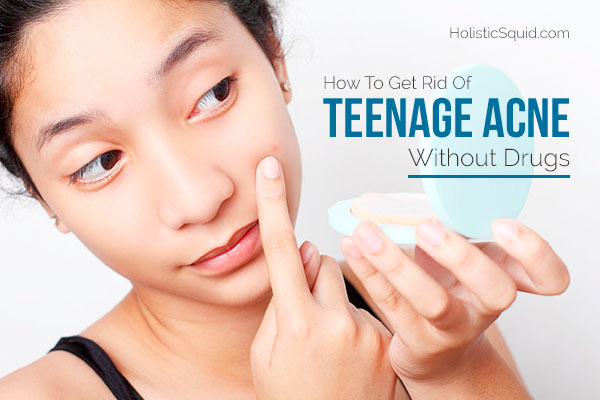

If high school isn't challenging enough – many teenagers must also deal with white heads, black heads, pustules, and old acne scars. While teenage acne is certainly normal, factors within your control may make it worse. This includes things like diet or finding ways to manage stress. The good news is that in spite of the surge of hormones that takes place during adolescence, there's a lot you and your teen can do to cure acne.
Why teens get acne
According to some reports, over 83% of girls and 95% of boys deal with acne. In other words, almost every young adult will confront a pimply face as he or she moves through puberty. This has to do with a rise in androgen levels – hormones like testosterone – which increase the size of sebaceous glands and the production of sebum, a waxy and fatty substance. In teens, acne tends to show up as:
- Whiteheads and blackheads, otherwise known as comedones
- Inflammatory acne
- Deep cystic lesions
But acne isn't only a hallmark of teenagers. It shows up in babies. And adults get it too. While hormones do play an important role in the development of acne during puberty – things like food, stress, and environmental triggers can mean the difference between unbearable teenage acne and mostly clear skin.
Take – for example – tribal communities that never see a pimple. In his book The Dietary Cure for Acne, Dr. Loren Cordain found that the Kitivan Islanders of Papua, New Guinea and the Aché hunter-gatherers of Paraguay are two communities that don't get acne. They also eat a diet that's low in quick-burning sugar and contains very little dairy.
In these communities, not one single case of acne has been found – even in young adults who are 15 – 25 years old. So, are hormones to blame for teenage acne? Sure. Is there more to the story beyond hormones? YES.
5 ways to naturally heal teenage acne
With diet as a driving factor, it may come as no surprise that antibiotics will not cure acne. In fact, these harsh drugs wipe out tribes of microbes living in the gut – making skin conditions like acne worse.
But diet can be a difficult topic to negotiate with a teen. Do your best. Use acne as way to educate your child about the relationship between skin health and gut health. At minimum, avoid antibiotics while focusing on probiotics. Here are some more tips to help your teen heal acne.
#1 – Cut out the sweets
In his research, Dr. Cordain found that stabilizing blood sugar can clear up acne. According to Dr. Cordain, acne is sometimes called “diabetes of the skin.” This is because acne is oftentimes a sign of poor blood sugar control. A diet that's high in processed, quick-burning sugars drives the production of insulin, insulin-like growth factor-1 (IGF-1), and androgens. If there are too many sweets, you're going to see oily skin and acne.
The easiest way to remedy haywire blood sugar – even in a teen – is cut back on sweets while bringing in high-quality protein and fat. If you're unsure about where to begin, the paleo diet offers an easy template to follow and a little meal planning can go far in setting your teen up for blemish-free success.
Bonus point for the paleo diet: It removes common acne triggers, like the dairy and wheat. While these foods aren't a problem for every teen, if acne is out of control and ruining your teen's life – these foods are worth removing for a time to see if acne improves.
#2 – Let them sleep in (or go to bed early)
Your teen is growing. All this growth takes work. Even though the body doesn't stop growing during sleep, 9 – 10 hours of nightly shut-eye allows restoration to kick in. Hormones work their magic and the body has a chance rest and reset.
Encourage your teen to get away from screens during the nighttime hours, which can interfere with the release of sleepy-time hormones. And if more sleep is needed, let them sleep in or go to bed early.
#3 – Make probiotics a regular thing
Skin health is a window to gut health. Surprisingly, gut health is rarely addressed in the treatment of teenage acne. But increasingly, researchers find that probiotics like Lactobacillus and Bifidobacterium help to support gut health and bring the intestinal immune system into balance – getting rid of acne. I like this shelf-stable probiotic.
Oral acne medications don't only destroy bad skin bacteria. They also kill good bacteria in the gut. These medications include antibiotics and Accutane, a harsh drug that's linked to irritable bowel disease (IBS). Besides avoiding these drugs and including probiotics, you can encourage good gut health by offering pre-biotic foods (like veggies!) and getting conventionally raised meat out of the house.
#4 – Instead of soap, give your teen a cleansing oil
The skin is home to skin bacteria, both good and bad. While we know that bad skin bacteria cause acne, it's the good bacteria that help to keep skin healthy. Unfortunately, many products and topical medications that treat teenage acne dry the skin out. These products also disrupt the balance of good skin bacteria.
To support healthy and glowing skin, it is important to use a cleanser that doesn't destroy good skin bacteria – like oil.
The oil cleansing method works by helping to remove dirt and makeup, while a warm cloth steam opens pores. Be sure to suggest an oil that doesn't clog pores – like argan, jojoba, or neem oil. And instead of picking at zits, encourage your teen to love and nourish her skin.
#5 – Run away from birth control
Oy, birth control. It's frequently given to young girls to get rid of signs of hormonal imbalance – like heavy periods, painful cramps, or acne. But it couldn't be worse for a young woman's developing body. If your doctor suggests birth control, run away as quickly as possible and find a new primary care provider.
True hormonal balance happens from within. Your teen won't be able to conjure up a healthy ebb and flow of hormones by adding birth control or drugs into the mix. Even common hormone disruptors from the environment – like plastics, makeup, and body care products – can do a lot of damage.
Instead of birth control, focus on natural skin care. Also, encourage your teen to eat plenty of fruit and vegetables. The fiber and antioxidants in these foods go far in eliminating excess estrogen and controlling teenage acne.
How did you get rid of teenage acne? Please share in the comments below!


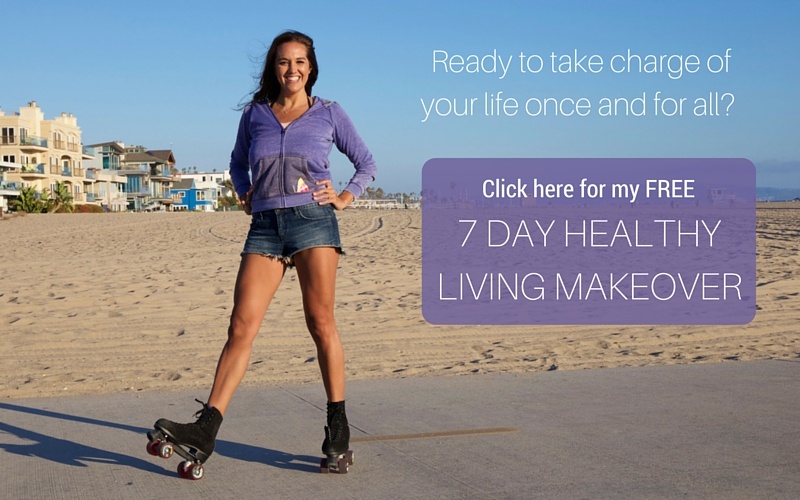
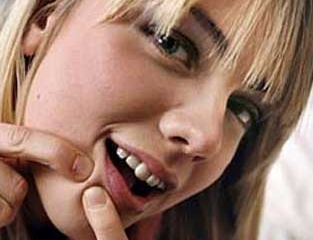
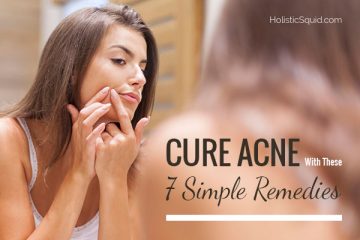
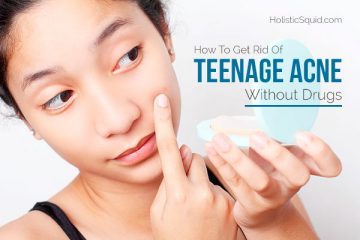
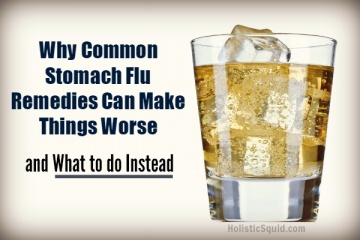

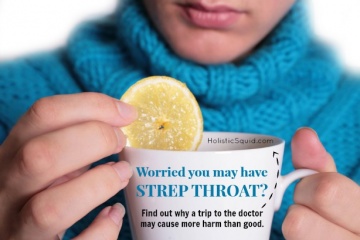
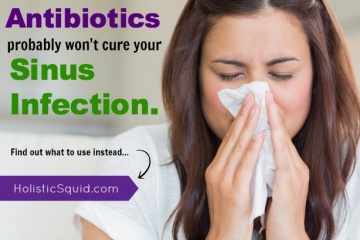
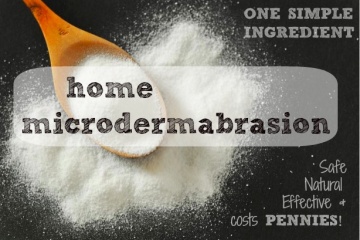
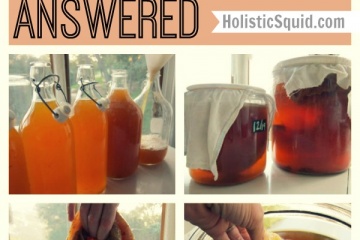
I wish so much that I had this important information when I was a child and broke out with acne at age 8 1/2 and spent years in and out of dermatologists offices. I was prescribed accutane twice (I was diagnosed with endometriosis stage four at age forty one and yes, probably have IBS like symptoms. It’s terrible! Anywhere I go, I always have to know where the bathroom is first.). I just turned fifty and still suffer from oily, but sensitive skin that occasionally breaks out. I also was diagnosed with seborheic dermatitis on my scalp (oily, sensitive scalp that breaks out in sores that hurt – looks similar to acne) in my early twenties, which is a frustrating and painful condition to live with also. I am constantly looking for answers and relief. In my experience, I have found dermatologists aren’t much help. I was told by someone that my severe seborheic dermatitis could be due to some sort of allergy or sensitivity to either dairy or gluten – does anybody know anything more about a connection? I’d love to hear! Thank you! Thank you so much for writing this and publishing it on your blog!
Would you mind if I asked – what would Emily do if she or someone in her family or a friend was diagnosed with seborrheic dermatitis? I am so curious and wanted to ask this question for awhile. I have very thick, long, wavy hair on the dry side and oily, but sensitive scalp that gets angry sometimes and breaks out in these awful, painful sores (SD)? I hear it’s related to acne and mostly men are diagnosed with this. It’s very frustrating! I used to shampoo with dandruff shampoo, but it didn’t help much – it just itched more the next day! Thank you! Hope to hear from you!
Hi Maria,
There’s strong evidence that seborrheic dermatitis is linked to a yeast overgrowth — this isn’t the yeast you normally hear about called Candida. It’s another kind yeast that found near hair follicles.
This yeast feeds on fat. I recommend two things: 1) Do a scalp treatment with mineral oil to soften any scales. 2) Wash with a shampoo that contain anti fungal essential oils, like tea tree or lavender.
Hope this helps! All the best,
Emily xoxo
When I was nearly 25 years old and married, my husband encouraged me to see a dermatologist. This wonderful and wise man began with stopping the antibiotics & applied a topical fungicide to my poor face. That was the beginning. Then he had me 1) decrease caffeine, 2) stop using soap, 3) stop drinking milk.
To have clear skin after 10 years of acne seemed no less than a miracle to me.
Now I make these same recommendations to every preteen I know. To it I add an increase of water – to keep your insides clean.
Your skin is the largest organ of your your body, it and the good bacteria living on it is your first line of defense- test it with care!
For my kids, when they had both cystic and regular acne, we used witch hazel to clean and nystatin cream on their faces. We also wipe with alcohol but not close to eyes and nose and never on lips when it was excessively oily. We used the nystatin on the face in the am and right after dinner so it had time to go in before bed. I don’t believe it is a form of diabetes, more a skin form of candida and sometimes a reaction to gluten. Removing wheat helped a lot…but the nystatin cleared it. Despite what drs will tell you…candida (yeast) can appear anywhere and anyplace….this is true esp of kids whose mom had yeast infections while preggers.
Hi Emily, i checked out the probiotics you recommended from Seeking Health and looked at other products they offer. I liked the look of Kids Optimal Multivitamin ( did you try that one by any chance?) and ordered it as my daughter is a very picky eater. When I looked on the bottle I found cal65 proposition saying that this product might be potentially harmful….do you know anything about this? I do not feel comfortable giving this to my children knowing there could be something potentially harmful. Lu, xx
Hey Lu,
I actually don’t give my kids a multi (I talk about that here: http://holisticsquid.com/kids-supplements/) and I have seen the Cal Prop 65 warning.
Prop 65 was initiated in 1986 and a warning label is usually needed as a result of compounds that have come in contact with the product at any point in time. For minerals, this can mean compounds at the mining source. For plants or herbs, this could mean compounds that are taken up from the soil prior to harvest (for example, rice is naturally high in arsenic).
I always recommend that nutrition come from food first. You can read more about Prop 65 labels on Seeking Health’s line here: https://www.seekinghealth.com/media/Prop65.pdf
All the best!
Emily xoxo
Hey Lu,
I actually don’t give my kids a multi (I talk about that here🙂 and I have seen the Cal Prop 65 warning.
Prop 65 was initiated in 1986 and a warning label is usually needed as a result of compounds that have come in contact with the product at any point in time. For minerals, this can mean compounds at the mining source. For plants or herbs, this could mean compounds that are taken up from the soil prior to harvest (for example, rice is naturally high in arsenic).
I always recommend that nutrition come from food first. You can read more about Prop 65 labels on Seeking Health’s line here:
All the best!
Emily xoxo
Hey, Great article!
In my opinion, one of the best ways to get rid of teenage acne is water.
Drinking plenty of water is essential for flushing out toxic waste that could otherwise seep through out skin and cause spots